What is vertical farming
Vertical farming LED grow lights are used in indoor growing facilities where racks of plants are stacked vertically from floor to ceiling. Vertical farming is a form of controlled environment agriculture (CEA) that enables growers to utilize the available space in the most efficient way possible. The growing need for sustainable agricultural operations that fuel the growth of the vertical farming market is driven by the rapidly growing urban population, changing climatic conditions, exhausting natural resources, depletion of soil quality, scarcity of water resources, and rising consumer demand for fresh organic products.
Vertical farming is heralded as the next-generation of modern agriculture which is intended to address the issue of diminishing arable land while enabling enhancement of the freshness and nutritional content of harvested fruits and vegetables by bringing large-scale commercial grow operations into densely packed urban centers. The way for massive deployment of this high density crop production technology, to a large extent, is paved by solid stage lighting based on LED technology.
LED lighting drives the trend of vertical farming
Unlike typical lighting installations in high intensity sole-source farms and supplemental greenhouses, light fixtures for indoor cultivation in multilayered growing environments must be embedded inside each level of the shelf system directly above and in close proximity to plants. High intensity discharge (HID) lamps, including high-pressure sodium (HPS) and ceramic metal halide (MH), produce too much heat to be installed in such proximity to the plant. Linear fluorescent lamps have a slim form factor and radiate little heat, but they fail to supply sufficient quantities of light in wavelengths critical to optimal plant growth and development.
LEDs produce no radiated heat (infrared energy), which allows light fixtures to be placed at much closer distances from the crop canopy for maximum irradiance. The small footprint of LEDs enables design of ultra-low profile horticulture lights that consume only a fraction of the vertical space occupied by traditional fixtures. The small semiconductor emitters can be populated in groups to form a light emitting surface (LES) that produces uniform distribution of irradiance. As a rule of thumb, the variation in irradiance uniformity across the plant canopy should not exceed ±15%.
LED technology takes performance and efficiency to a new horizon
The profound transformation in controlled environment agriculture facilitated by LED technology goes the extra mile. On the horizon is the enormously improved operational efficiency. Because sunlight is not an option in vertical farms, cultivation of plants relies completely on artificial light. Light fixtures used in vertical farms need to deliver an intensity higher than what is needed for greenhouses and operate for around 6600 hours per year. Electrical cost for the horticulture lighting applications thus has been among a major operational expense.
The photosynthetic photon efficacy (PPE) of LEDs exceeds that of the best-in-class conventional light sources by a factor of two to 3.8 µmol/J and continues to advance toward a PPE of greater than 4. Improvements in lighting application efficiency (LAE), which accounts for optical delivery efficiency, the effectiveness of the light spectrum for the lighting application, and intensity effectiveness, can deliver substantial additional energy savings. In older generation vertical farms, linear fluorescent lamps were operated with a power density of 23 W/ft2. With LED lighting, a 50% reduction in lighting power density can be achieved.
LED lighting not only leads the way forward with heightened energy efficiency, but also brings indoor farming to the frontier of precision agriculture technology. LED lighting can be as precisely controllable as other variables of the growing environment such as temperature, humidity, nutrients, ventilation and CO2. In addition to low intensity effectiveness due to the limited dimmability and on/off switching cycles, traditional lighting technologies have minimal choice of spectral variation.
Aside from instantaneous control over a wide range of intensity that provides the ability to deliver the right amount of light on demand, LEDs or LED modules can be engineered to emit light in very specific parts of the spectrum, making it possible to create precisely the composition of light that plants make best use of. Precise control of the spectral power distribution (SPD) allows different photoreceptors to be selectively stimulated, enabling the most efficient biological processes for optimal plant production in every desired aspect (yield, taste, color, shape, texture, nutritional content and other features).
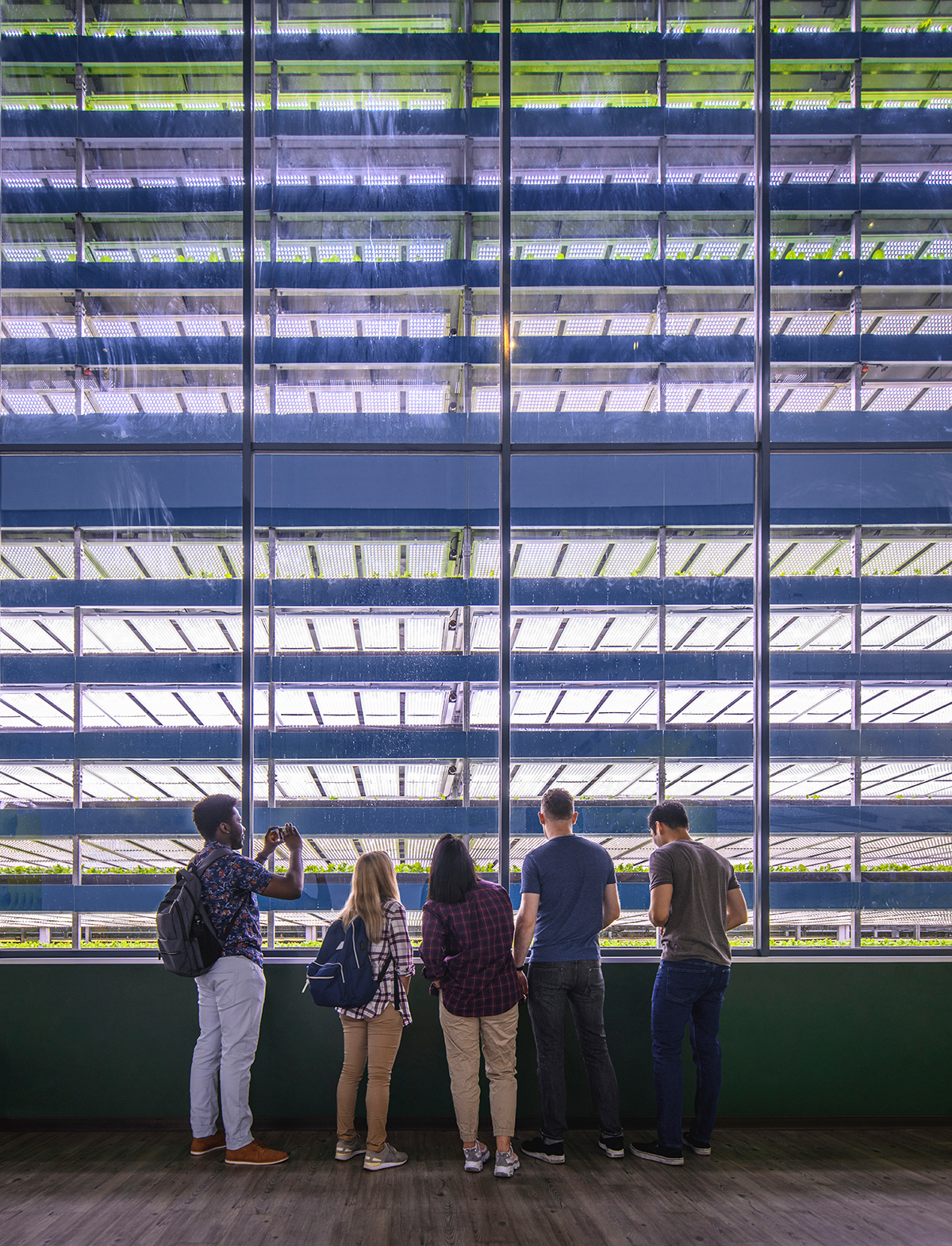
Photosynthetic photon flux
An LED grow light installed over a rack-mounted tray of a multi-layer production system is typically a linear fixture or a modular assembly of linear light bars. Deploy lighting in linear runs ensures high uniformity distribution of irradiance across the canopy even at shorter distances. The photon flux package of an LED grow light depends on the type of plant, each phase of growth, and the distance between the light source and the plant.
Multi-layered plants are typically leafy greens and culinary herbs. They generally require a photosynthetic photon flux density (PPFD) of 200 to 400 μmol/m²/s at the seedling stage, 300 to 600 μmol/m²/s at the vegging stage, and 600 to 900 μmol/m²/s at the flowering stage. However, to max out the flowering of cannabis plants the PPFD should go up to 1200 μmol/m²/s.
Wide variation in PPFD requirements results in a proliferation of products with wattage options ranging from 30 watts to 1000 watts. The luminaire’s photosynthetic photon flux (PPF), which is the quantity of photons within the photosynthetically active radiation (PAR) waveband emitted from a luminaire every second, varies from 80 to 3000 μmol/s. The PPF of a vertical farming LED grow light can usually be adjusted to support each individual stage of plant growth. Vertical farming LED grow lights are mounted 5 to 12 inches above the plant canopy.
The action spectrum of photosynthesis
The spectral composition of light is a key component that goes into the design of a vertical farming LED grow light. A plant lighting system for sole-source (absence of sunlight) lighting application must provide plants with an adequate flux of photosynthetically active radiation to push each stage of growth. However, as plants also have photoreceptors which absorb wavelengths both within and beyond the PAR area to control plant development and metabolism, the light spectrum should provide the spectral content essential to the optimal absorption of these photoreceptors.
The photosynthetic photosystem relies on chlorophyll A, chlorophyll B and carotenoids to fuel metabolic processes and drive biomass production. The wavelengths that allow for the most efficient photosynthesis are found in the blue and regions of the spectrum with absorption peaks at 430 nm and 680 nm for chlorophyll A, and 460 nm and 640 nm for chlorophyll B.
Carotenoids (such as beta-carotene, lutein, zeaxanthin, antheraxanthin, and violaxanthin) can assist in capturing light that chlorophylls do not absorb, or protect the chlorophylls from photooxidation by dissipating excess light as heat when photosynthetic reaction centers are overloaded with incoming energy. The absorbance range of carotenoids falls in the blue and green regions of the visible spectrum (400–550 nm) and peaks at around 470 nm.
The largest absorption of photosynthetic photons by the plant occurs in the 600-700 nm red region. While both red and blue light drives photosynthesis, their absorption wavelengths overlap with photoreceptors which regulate physiological responses and anatomical traits in plants.
Targeting specific signal-transducing photoreceptors
Plants have evolved to sense light environment (quantity, quality, direction and duration of irradiance) and steer the long-term development and short-term dynamic acclimation to the environment accordingly. The influence on the physiological changes related to interaction between light and plants, including photomorphogenesis (plant anatomy), phototropism (leaf and stem orientation) and photonasty (non-directional changes, e.g., flower opening), is exercised by a group of non-photosynthetic photoreceptors including phytochromes, cryptochromes, and phototropins.
Phytochromes absorb both red and far-red light with absorption peaks at 660 nm and at 730 nm. The red:far-red ratio is related to stimulation or inhibition of a number of developmental processes in plants such as seed germination, leaf unrolling, chlorophyll biosynthesis, and stem elongation. Low light intensities and a sharp decline in the proportion of red to far-red light work together to induce the shade avoidance syndrome (SAS). Low R:FR ratios have also been shown to reduce the production of many secondary metabolites which are involved in disease resistance. For reference, direct sunlight has a ratio of red and far red light of 1.1 to 1.2.
Cryptochromes and phototropins are UV-A/blue-light photoreceptors. Cryptochromes regulate secondary metabolism, pigment synthesis, flowering, and inhibition of stem elongation. They also function to entrain circadian rhythms. Phototropins mediate stomatal regulation, chloroplast movement, plant movement towards light, leaf flattening, and de-etiolation of the hypocotyl.
Spectral controllability sets LED lighting apart
Vertical farming is a capital- and energy-intensive application which puts immense pressure on the quality of light and efficiency of lighting systems. The effectiveness of light spectrum, which must enhance and improve photosynthetic efficiency and control developmental processes for the high value crops while minimizing the amount of wasted light, runs parallel with the energy efficient operation of a lighting system.
LED technology offers the capability of improving spectral efficiency beyond just improvements to efficiency of energy conversion from electrical power to optical power. The SPD of the LEDs can be engineered to engage specific plant photoreceptors for positive contribution to various aspects of plant growth and development, such as the germination process, flowering, vegetation, fruiting, flavor enhancement, nutritional value, and even disease control.
The spectrum of light emitted by LEDs can be tailored to meet the unique spectral requirements of different plants in several ways. The first way is to manipulate the bandgaps of the semiconductor layers forming the multiple quantum well (MQW) of an LED die. This method produces monochromatic LEDs that appear to emit light having a single color. For example, yellow, amber or red light may be produced using LEDs formed from the aluminum indium gallium phosphide (AlInGaP) material system. Green, cyan, UV, blue and royal blue LEDs are fabricated using the indium gallium nitride (InGaN) material system.
An alternative method is to use a wavelength converting element (WCE), which partially or completely converts the electroluminescence to modify the spectrum of an LED. Phosphor materials are used to converts part of the blue or UV emission from InGaN LEDs in order to obtain a broad spectrum light source, such as a white light source. Yet another method to tailor the spectral output of an LED grow light to mix three primary colors of visible light (red, green, and blue) to create secondary colors within the color gamut. Individual, accurate dimming control of multiple monochromatic LEDs provides the ability to dynamically control the spectrum of an LED grow light.
System design and engineering
An LED grow light is a highly engineered system that integrates multiple components to deliver the intended performance. LEDs are complicated semiconductor devices which are designed to operate under specified ranges for temperature and electrical power. The efficiency and reliability of an LED grow light will be determined by all its constitutive parts (which include LEDs and their thermal, mechanical and electrical interfaces) and their performance under operational and environmental stresses.
Horticulture LEDs come in types of ceramic-based high power packages, chip-scale packages (CSP), chip-on-board (COB) packages, and mid-power plastic leaded chip carrier (PLCC) packages. High power and CSP LEDs which are designed with a high efficiency thermal path provide the best photon flux maintenance and allow for high drive current operation. These LED packages are typically used in high PPF LED grow lights. Mid-power LEDs built on the PLCC architecture usually exhibit rapid photon flux depreciation due to the presence of plastic resin in the packages.
While the LED package platform defines the ability of the LEDs to perform at high drive currents and operating temperatures, the ability of the LEDs to operate to specification for a required period of time depends on the luminaire design. One of the most important design considerations should be the system’s ability to draw the waste heat away from the LED junction. The thermal load of a vertical farming LED grow light is generally dissipated by passive heat sinks made from extruded aluminum. The expansive linear configuration of the light fixture provides an adequately dimensioned cooling path.
Line and load regulation
The most critical part that defines the efficiency and reliability of an LED grow light is the driver. LEDs operate natively on DC power at a forward directional voltage. Fundamentally, the LED driver converts AC line power to a voltage and current compatible with the LED load. It should provide accurate control of the forward current flowing through the LEDs regardless of changes in the supply voltage or LED forward voltage. The requirement for line-operated equipment to implement power factor correction (PFC) adds complexity to the driver circuit design.
Most LED drivers are designed as switching power supplies that adopt a single-stage or two-stage topology. A two-stage driver with a front-end PFC is typically used to operate high power LED systems due to its ability to deliver higher efficiency and reliability in high wattage applications. Single-stage LED drivers are more commonly used to operate LED grow lights that draw less than 100 watts of power primarily because of their low circuit cost and simplicity (low-part count).
The controllability of an LED grow light is determined by the driver. It’s a usual requirement for the driver to incorporate dimming circuitry and accept control input via an analog or digital interface such as 0-10VDC, DALI, DMX, or ZigBee. LED drivers that are used to operate vertical farming LED grow lights are often designed with multiple output channels. This feature allows independent control of separate LED channels for spectral tuning and/or intensity adjustment.

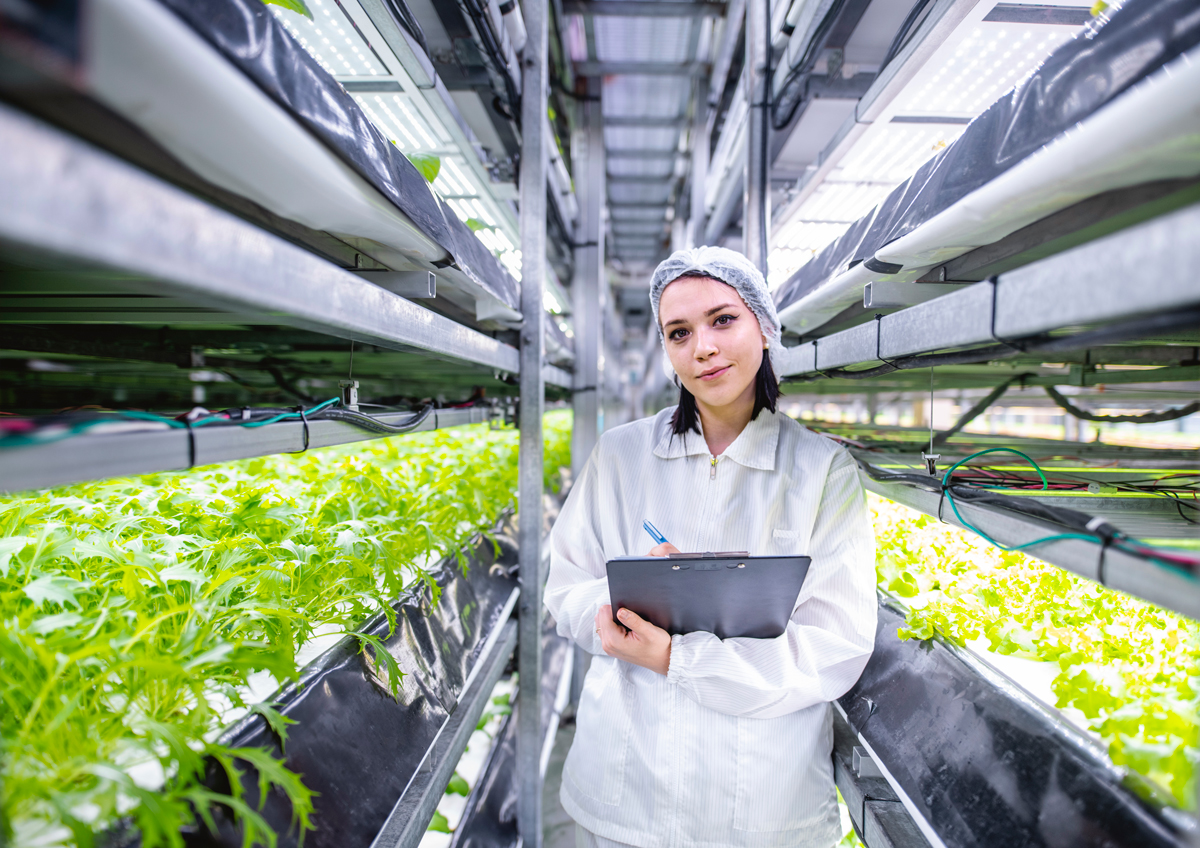
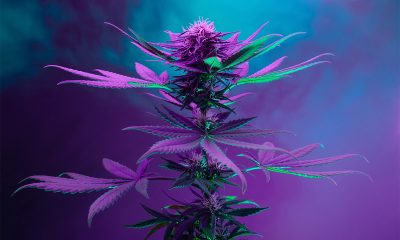
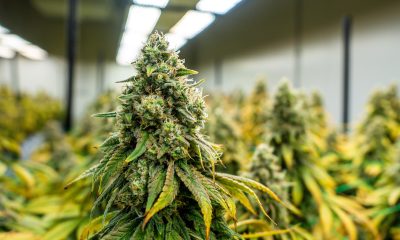
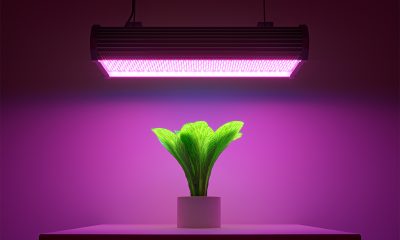
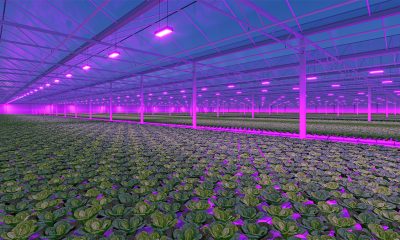
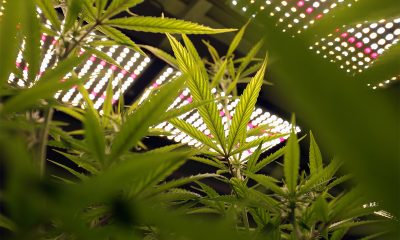
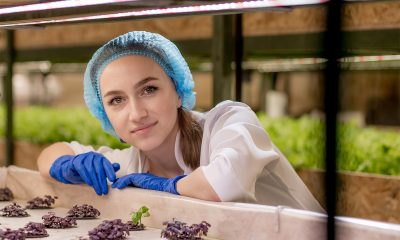
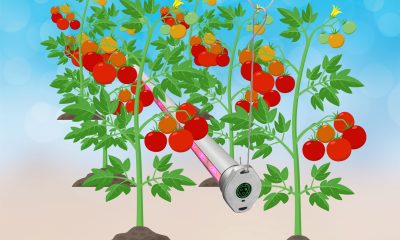
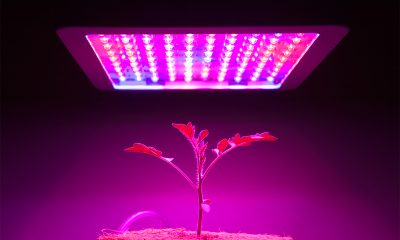






Loading...